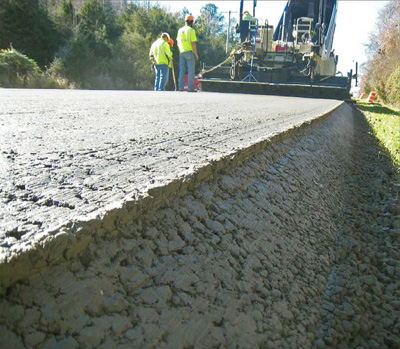During the second week of January, the epicenter of the transportation world was Washington, D.C. and the 95th annual meeting of the Transportation Research Board. Over 12,000 transportation professionals from around the world came to see more than 5,000 presentations in nearly 800 sessions and workshops.
Author: Tom Kuennen
Precast ‘crushable’ concrete equal to security applications
“Crushable” concrete for better protection against terrorists … improved designs for precast rockfall barriers … corrosion of precast concrete barrier connections … lightweight, high-performance, self-consolidating concrete for bulb-T beams. They’re all part of new research presented earlier this year during the 94th annual Transportation Research Board annual meeting, which drew 12,000-plus design, engineering and allied professionals to Washington, D.C.
Read MoreSUBSTITUTE NEARLY HALF RCA FOR STONE IN PCC PAVEMENTS
Replacement of recycled concrete aggregate (RCA) for natural coarse aggregate by up to 45 percent by volume had no significant effects on any of the concrete properties studied, indicating high-quality RCA can be used as a replacement for a portion of the coarse natural aggregates in new portland cement concrete pavements. That’s what Haifang Wen, Ph.D., P.E., Washington State University; David I. McLean, Ph.D., P.E., Colorado State University; and, Kim Willoughby, Washington State DOT, report in their 2015 TRB paper, Evaluation of Recycled Concrete as Aggregates in New Concrete Pavements.
Read MoreSELF-CONSOLIDATING CONCRETE FOR RAPID SLAB REPLACEMENTS
A refined self-consolidating concrete (SCC) mix was developed to achieve the high workability needed for faster concrete discharge and finish, and attain the Florida Department of Transportation six-hour strength requirement of 2,200 psi (15 MPa) for concrete slab replacements, report Jamshid Armaghani, Ph.D., P.E., Global Sustainable Solutions, Gainesville, Fla.; Kamal Tawfiq, Ph.D., P.E., and Steven Squillacote, FAMU-FSU College of Engineering, Tallahassee; and, Michael Bergin, P.E., State Materials Office, Florida DOT-Gainesville, in their 2015 TRB paper, Accelerating Slab Replacement Using Self-Consolidating Concrete.
FLY ASH, LIMESTONE/CEMENT BLENDS BOOST COMPRESSIVE STRENGTHS
Research in Mississippi shows that portland cement/limestone blends (PLC) result in notable compressive strength improvements in mixtures with high Class C fly ash replacement versus conventional Type I portland cement, say Jay Shannon and Dr. Isaac L. Howard, P.E., Mississippi State University, and V. Tim Cost, P.E., F.ACI, and Wayne M. Wilson, P.E., Holcim (US) Inc., in their 2015 TRB paper, Benefits of Portland-Limestone Cement for Concrete with Rounded Gravel Aggregates and Higher Fly Ash Replacement Rates.
INTERGROUND LIMESTONE/CEMENT BLENDS WILL WORK IN LOUISIANA
Interground limestone/cement blends are appropriate for all uses in the Pelican State, say Tyson D. Rupnow, Ph.D, P.E., and Patrick J. Icenogle, P.E., Louisiana Transportation Research Center, Baton Rouge, in their paper, Louisiana’s Laboratory Experience with Type IL Portland Cement.
Read MoreGlow in the Dark Concrete?
New Purdue University research says ‘yes’
Glow-in-the-dark concrete took the stage with new research in self-consolidating concrete, portland cement/limestone blends, and recycled concrete aggregates in ready mixed concrete, and it’s all illuminating the future of cast-in-place.
RCC proves ‘A-OK’ for Rebuilding Rural Roads
By Tom Kuennen
Roller-compacted concrete (RCC), followed by diamond grinding to smooth the surface, is the smart choice for rebuilding rural roads damaged by energy development truck traffic in Arkansas, according to new research presented at the 93rd annual meeting of the Transportation Research Board earlier this year in Washington, D.C.
Read MoreFRP Hybrids Make Encore Appearance at TRB 2014
After a strong showing in January 2013, glass and polymer fiber-reinforced polymer hybrid precast girders again dominated the technical presentations on precast technology and accelerated bridge construction at the 93rd annual meeting of the Transportation Research Board earlier this year in Washington, D.C.
Read More





